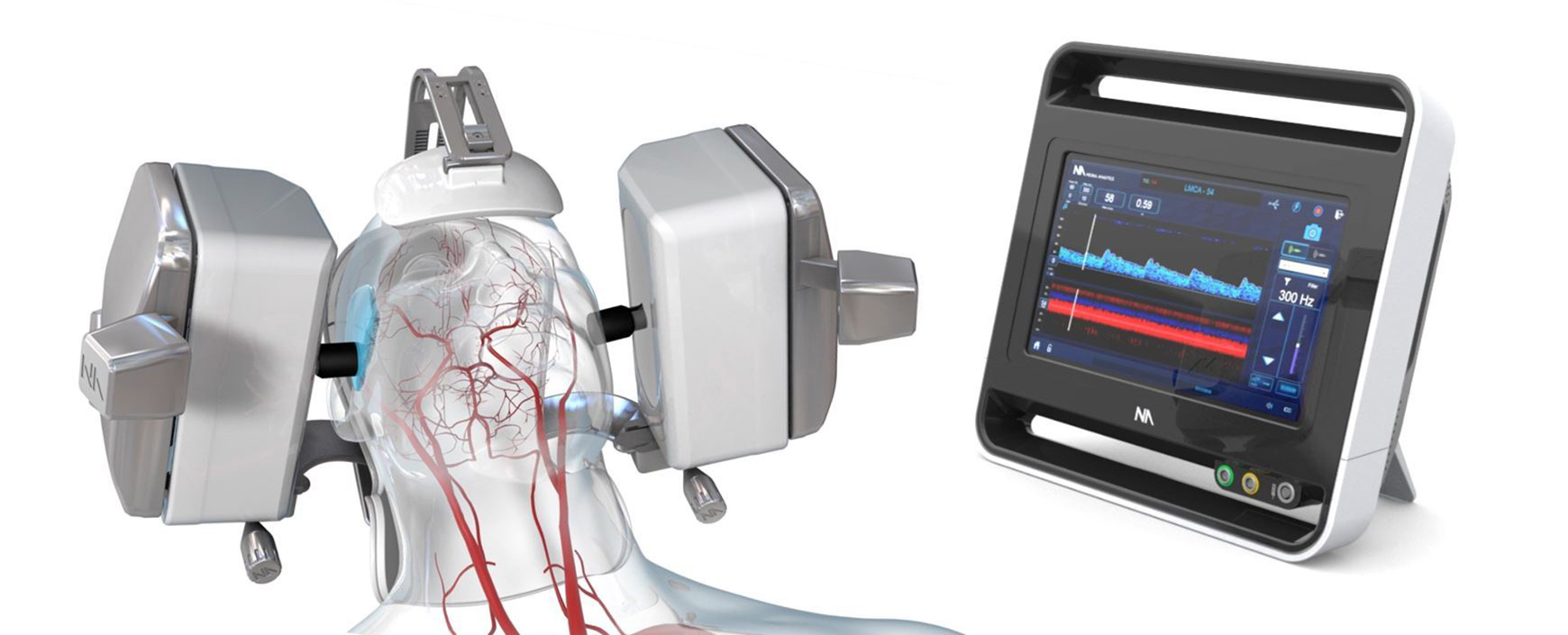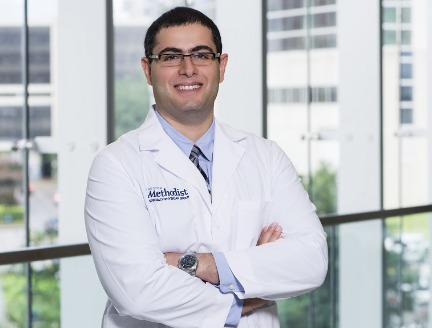


Outcomes Research
Robotic Ultrasound for Stroke

Lucid™ Robotic System monitors brain blood flow noninvasively
The Lucid™ Robotic System (Lucid™ M1 Transcranial Doppler Ultrasound System® and NeuralBot™ System) is a robotically assisted ultrasound system for brain health assessment.
Neurological disorders, such as stroke, present a major health care burden, affecting more than 795,000 people in the U.S. annually. Stroke is a time-sensitive disease that requires rapid assessment and intervention. And assessing it incorrectly can lead to misdiagnosis and treatment delays, resulting in death or disability for patients.
In June 2019, Houston Methodist was the first in the United States to offer the Lucid™ Robotic System, a new robotic ultrasound system designed to non-invasively measure and display objective brain blood flow information in real time and detect cerebral embolization. The FDA-cleared, fully autonomous robotic platform combines an all-in-one neurovascular ultrasound device with a medical robotic headset to collect blood flow data under the guidance of a health care professional.
The Lucid™ Robotic System (Lucid™ M1 Transcranial Doppler Ultrasound System® and NeuralBot™ System) addresses several clinical challenges. It minimizes the need for highly skilled personnel to apply the probes that detect and measure flow and it autonomously adjusts the detection process on a continuous basis.
The assessments can be performed both in an inpatient or outpatient setting, potentially without the need for more invasive and costly tests. The technology provides clinicians with critical information that empowers them to assess neurological disorders.
Integrating the Lucid™ Robotic System gives clinicians a chance to look inside the brain at blood flow patterns in real time and rapidly identify physiological changes associated with neurological disorders, enabling efficient diagnosis and triage for treatment.
Alan B. Lumsden, MD
Walter W. Fondren III Distinguished Endowed Chair
DeBakey Heart & Vascular Center
Professor and Chair, Department of Cardiovascular Surgery
Houston Methodist

The new robotic system also makes the important monitoring technology available to a much larger group of patients and goes beyond providing just the initial neurological assessment. It can be utilized throughout the patient care chain: from bubble studies in the identification of right-to-left shunts, to monitoring for changes in cerebral blood flow velocities, to emboli monitoring during or after a procedure.
“At Houston Methodist DeBakey Heart and Vascular Center, we are particularly focused on reducing stroke and are committed to providing the best care for our patients,” said Lumsden. “Being among the first centers to use the robotic ultrasound technology reflects our commitment to providing our patients and reducing the incidence of this life altering event. We think of this as a stethoscope to the brain.”
George Kovacik, June 2019








